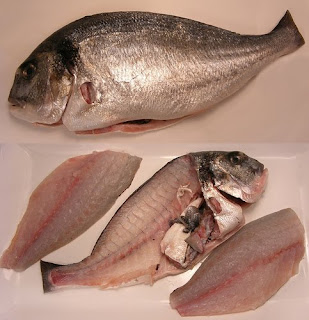Scallopers Facing Reduction
Thursday, September 20, 2012
Scallopers facing 30 percent catch reduction in each of the next two years | SouthCoastToday.com
Scallopers facing 30 percent catch reduction in each of the next two years | SouthCoastToday.com
NEW BEDFORD — The scallop catch could be cut up to 30 percent in each of the next two years in what fishermen say would be a heavy blow to the industry.
Deirdre Boelke, a scallop plan coordinator with the New England Fishery Management Council, said the reductions are needed because fewer full-grown scallops are available for harvest.
"The projected catch for 2013 and 2014 is in the neighborhood of 40 million pounds," Boelke told The Standard-Times after a meeting of the council's Scallop Oversight Committee in New Bedford on Tuesday. That's down from just under 57 million pounds in 2011, the latest full-year figures available.
"It's a big hit that will affect everyone," said boat owner William Wells of Seaford, Va., who chairs the scallop advisory panel, made up of industry members. "Each vessel will lose 46,000 pounds and there's about 347 vessels. With prices ranging from $8 to $12.50 a pound, just do the math."
The scallop industry has enjoyed a boom in recent years with record catches fetching prices of $10 per pound and higher at the dock.
Time will tell how badly the cuts may affect the industry's health, said Richie Canastra, co-owner of the BASE seafood display auction.
"It depends if the price stays up," Canastra said. "There's a lot going on both in Europe and in our economy."
He said the industry is already tightly regulated with limits on crew size and a ring size of 4 inches on scallop dredges to allow smaller scallops to escape.
The Atlantic scallop population is estimated at around 8 billion animals, split between Georges Bank and the Mid-Atlantic. But in 2011 that number was down to 2.5 billion in the Mid-Atlantic region. This year it's back to 4 billion, according to an SMAST video survey. "That's the good news. The bad news is they are all small," said Kevin Stokesbury who chairs SMAST's Department of Fisheries
Oceanography.
For the last three years the survival rate of scallops, known as recruitment, has been below average, he said. "Good recruitment is about 35 percent of the stock. But we've seen it down around 19 percent during that time and fishing hasn't been reduced. In the Mid-Atlantic the large recruitment that we saw in 2003 has been fished out."
Tuesday's committee meeting adopted a motion to recommend closing the two large scallop grounds in the Mid-Atlantic — Delmarva off the Delmarva Peninsula and Elephant Trunk off New Jersey — to fishing to protect the resource.
"It's a responsible decision. Both the industry and the committee agree on the science," Boelke said.
The committee's recommendation goes before the full fishery council in November.
The proposed cuts could be offset if scallop fishermen are permitted to fish in other areas of the Northeast, known as habitat areas, that are currently off limits, industry figures say.
"Thirty percent of the biomass is tied up in those closed areas," said scalloper Joe Gilbert, of Stonington, Conn., who attended Tuesday's meeting.
"They should have opened the Northern Edge 10 years ago," Canastra said of a restricted area on Georges Bank.
That proposal has some support and will be reviewed, said Boelke. "We have forwarded the council a request to look into the most expeditious way to get fishing into those areas," she said. There are an estimated 46 million pounds of scallops available for harvest within those



Comments